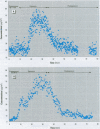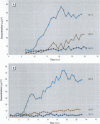Abstract
We have developed and applied a new measurement methodology to investigate dermal absorption of chloroform while bathing. Ten subjects bathed in chlorinated water while breathing pure air through a face mask. Their exhaled breath was delivered to a glow discharge source/ion trap mass spectrometer for continuous real-time measurement of chloroform in the breath. This new method provides abundant data compared to previous discrete time-integrated breath sampling methods. The method is particularly well suited to studying dermal exposure because the full face mask eliminates exposure to contaminated air. Seven of the 10 subjects bathed in water at two or three different temperatures between 30 degrees C and 40 degrees C. Subjects at the highest temperatures exhaled about 30 times more chloroform than the same subjects at the lowest temperatures. This probably results from a decline in blood flow to the skin at the lower temperatures as the body seeks to conserve heat forcing the chloroform to diffuse over a much greater path length before encountering the blood. These results suggest that pharmacokinetic models need to employ temperature-dependent parameters. Two existing models predict quite different times of about 12 min and 29 min for chloroform flux through the stratum corneum to reach equilibrium. At 40 degrees C, the time for the flux to reach a near steady-state value is 6-9 min. Although uptake and decay processes involve several body compartments, the complicating effect of the stratum corneum lag time made it difficult to fit multiexponential curves to the data; however, a single-compartment model gave a satisfactory fit.
Full text
PDF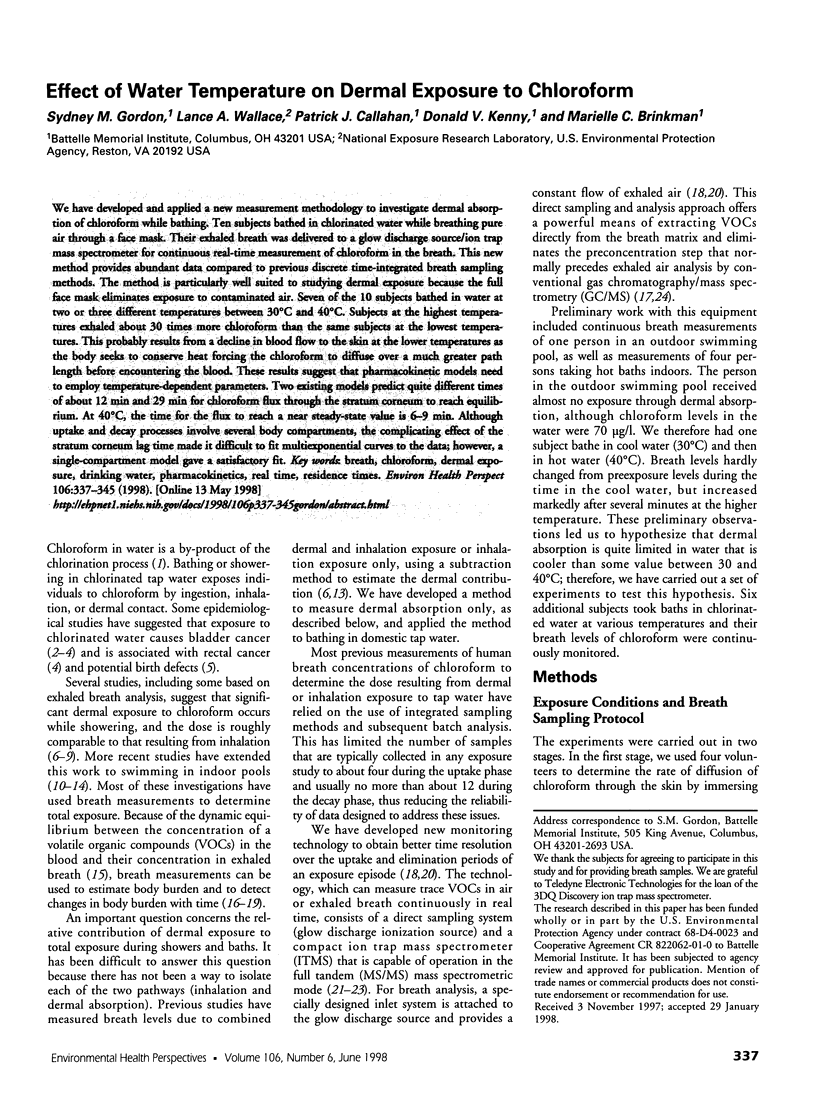
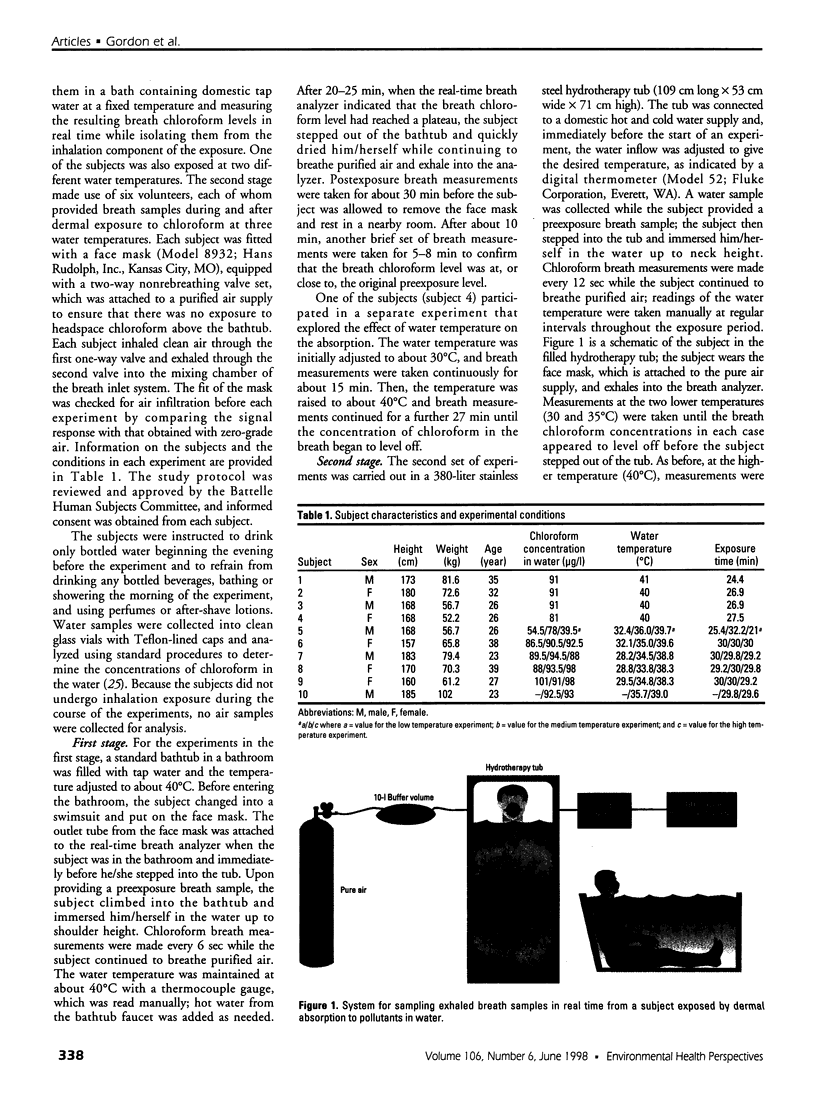
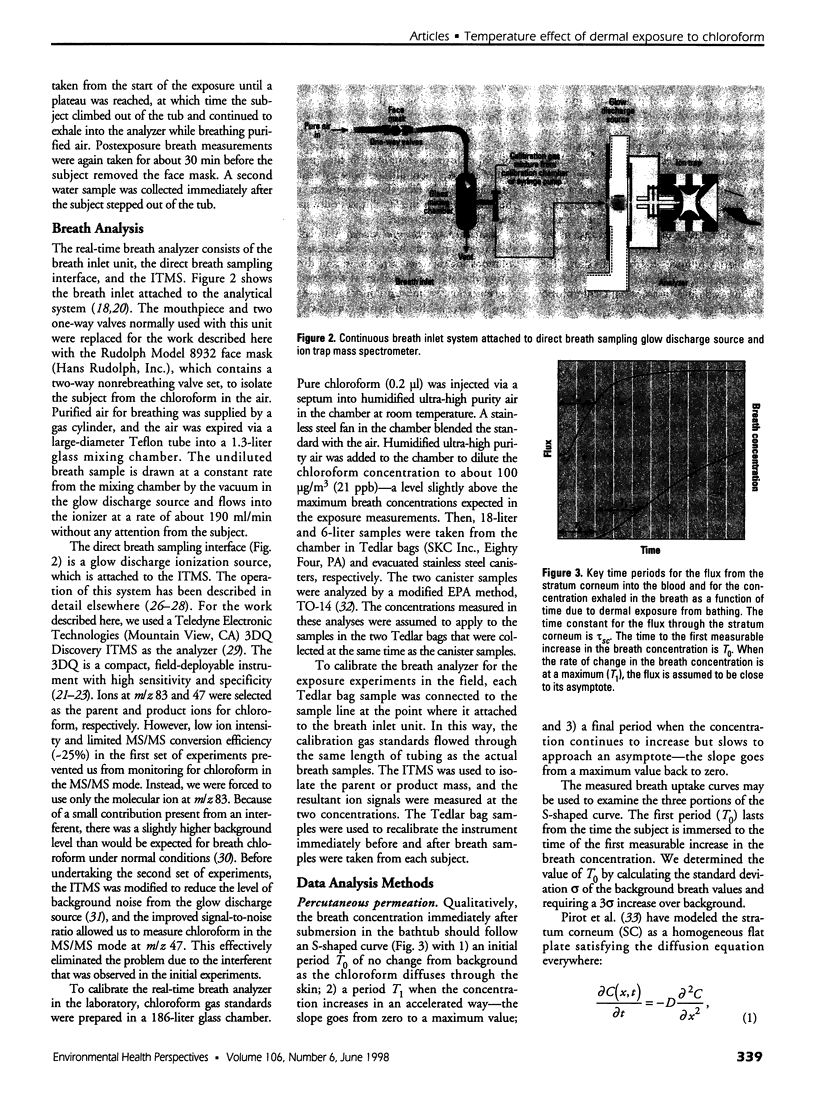
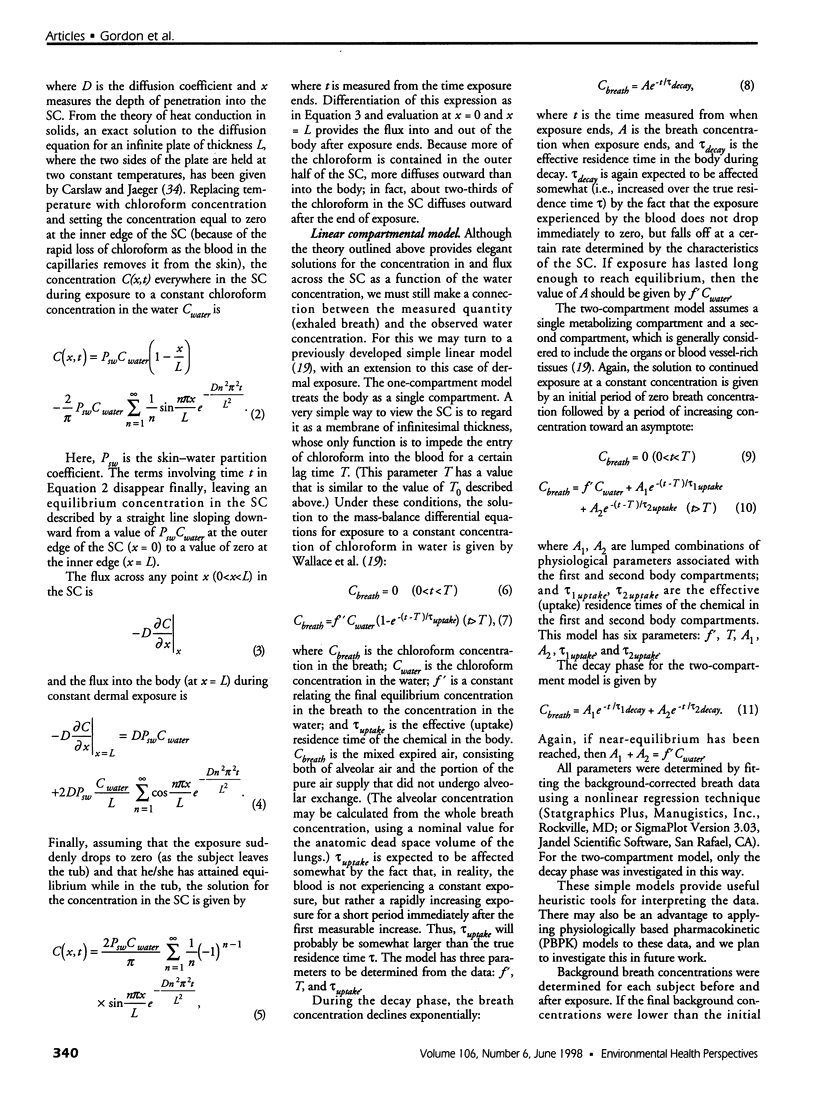
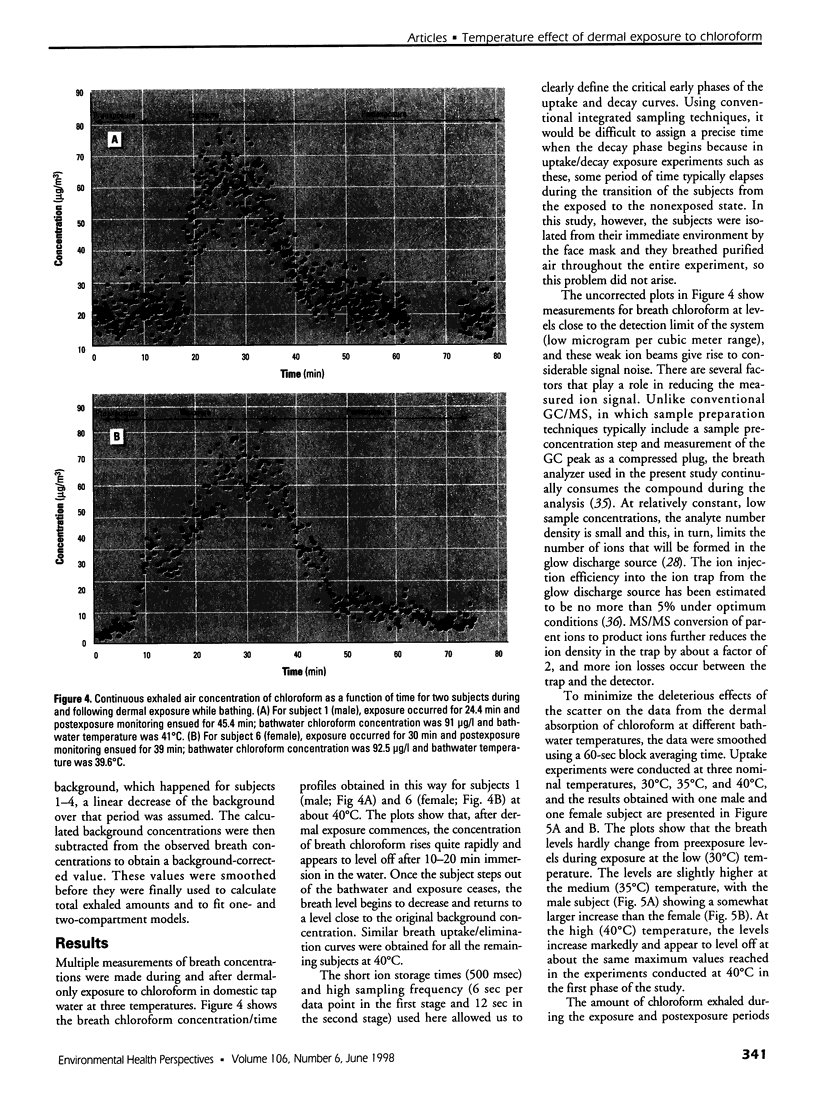
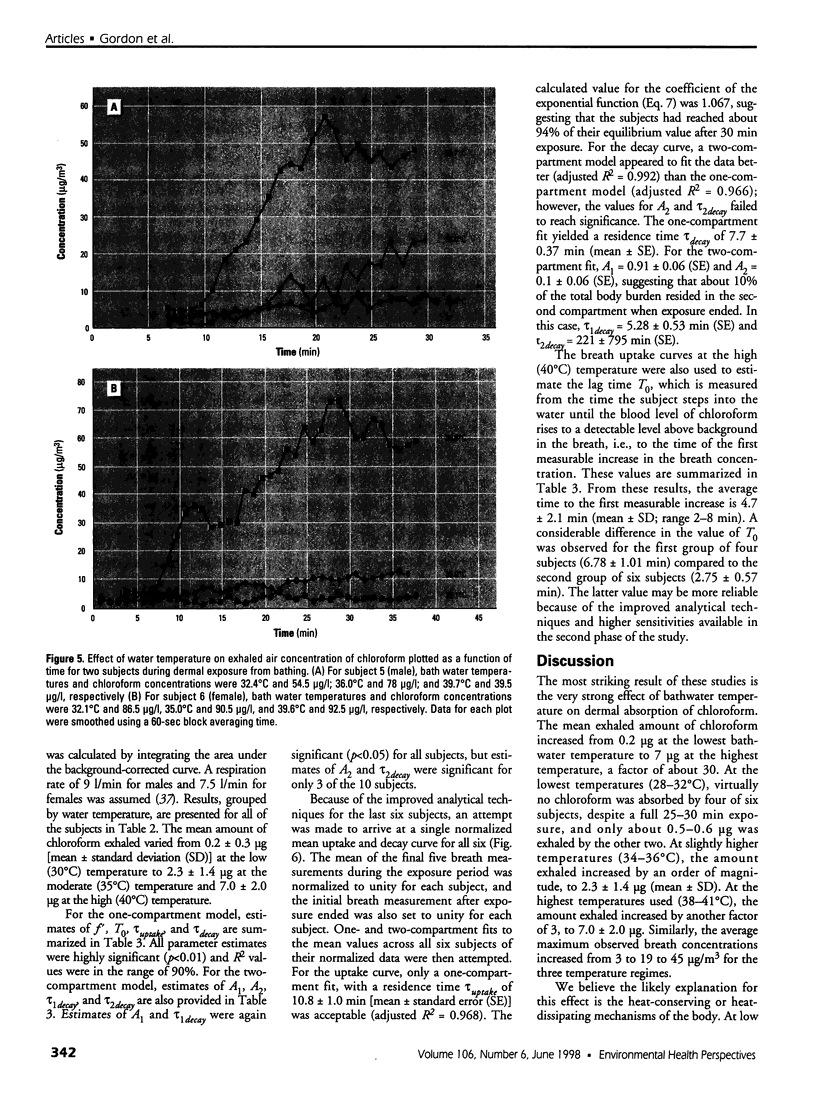
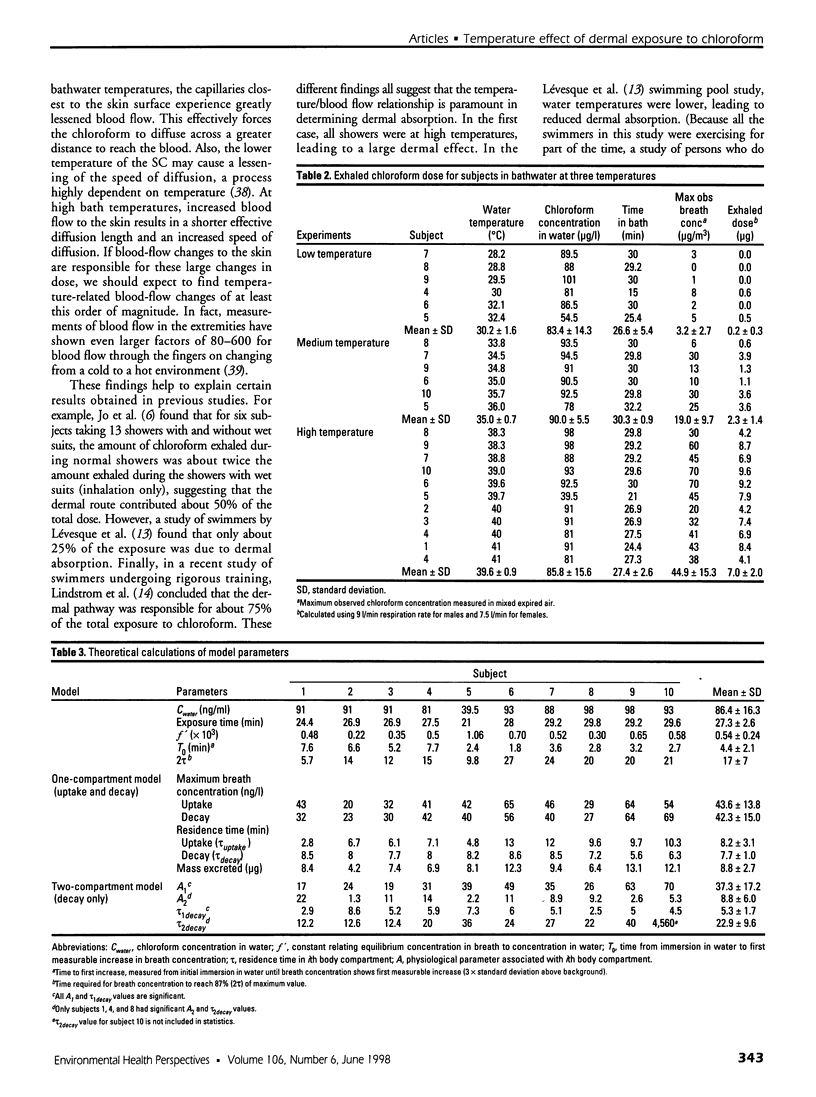
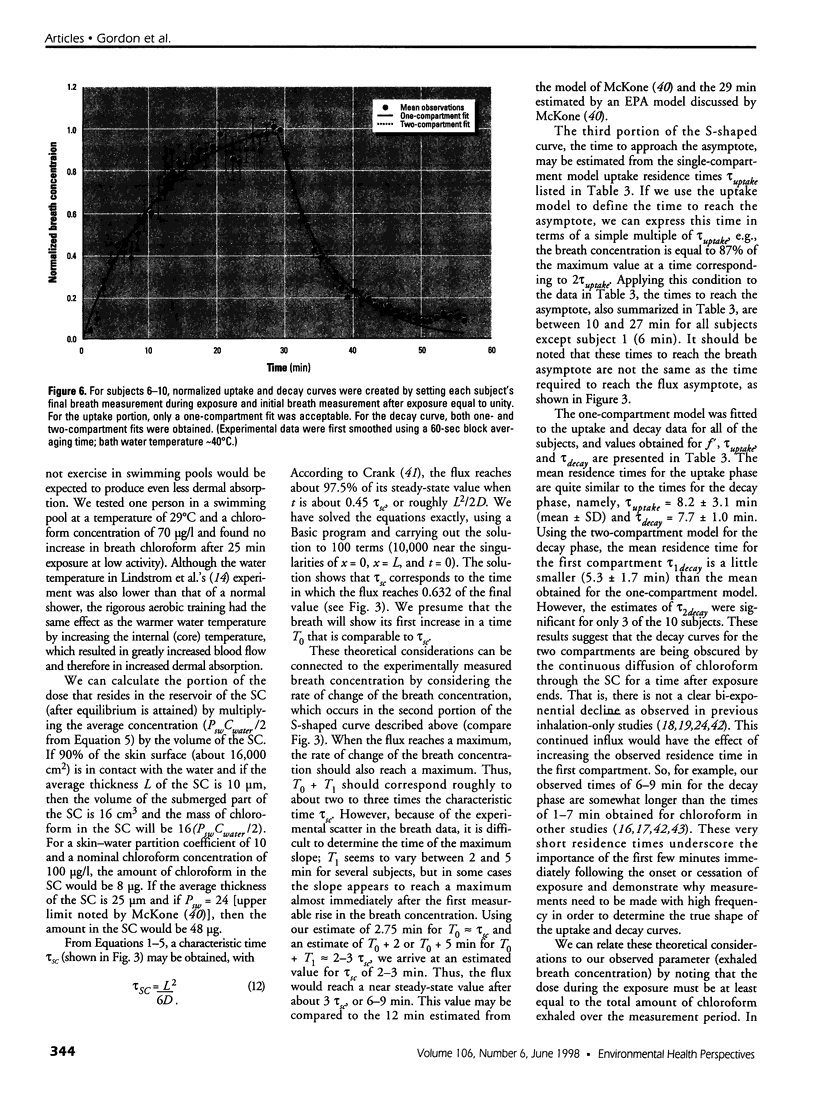
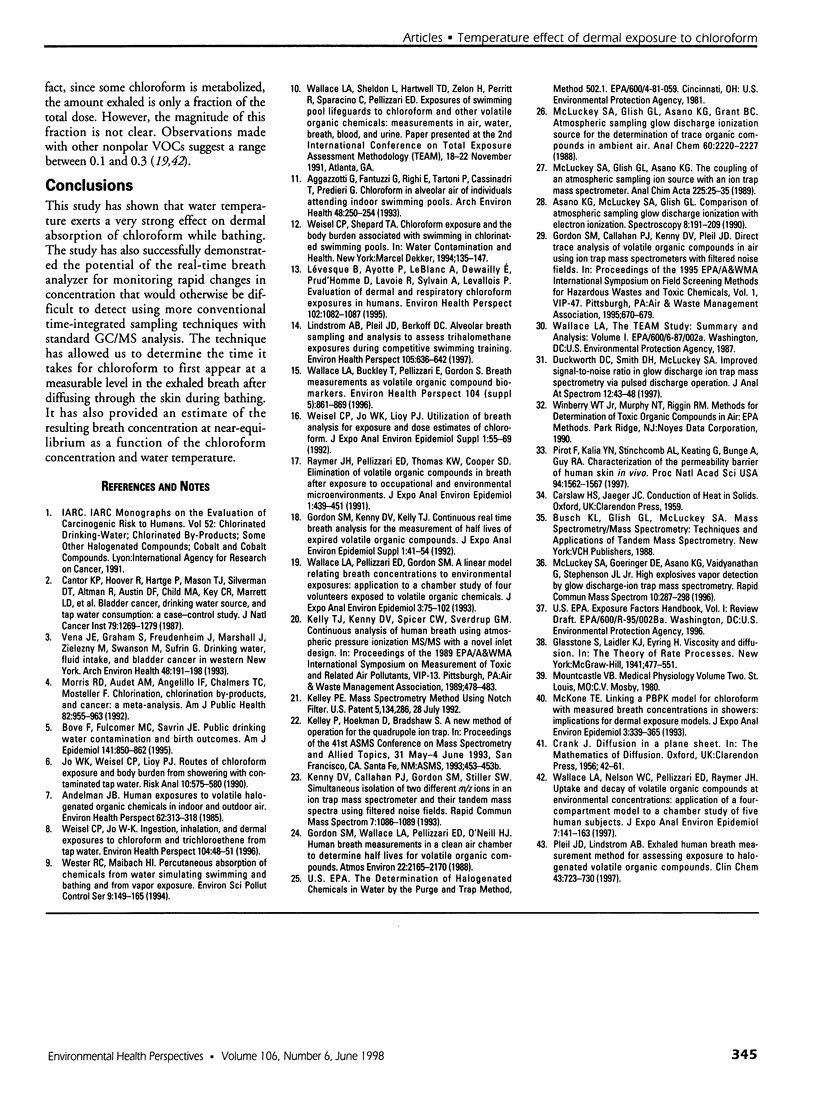
Images in this article
Selected References
These references are in PubMed. This may not be the complete list of references from this article.
- Aggazzotti G., Fantuzzi G., Righi E., Tartoni P., Cassinadri T., Predieri G. Chloroform in alveolar air of individuals attending indoor swimming pools. Arch Environ Health. 1993 Jul-Aug;48(4):250–254. doi: 10.1080/00039896.1993.9940368. [DOI] [PubMed] [Google Scholar]
- Bove F. J., Fulcomer M. C., Klotz J. B., Esmart J., Dufficy E. M., Savrin J. E. Public drinking water contamination and birth outcomes. Am J Epidemiol. 1995 May 1;141(9):850–862. doi: 10.1093/oxfordjournals.aje.a117521. [DOI] [PubMed] [Google Scholar]
- Cantor K. P., Hoover R., Hartge P., Mason T. J., Silverman D. T., Altman R., Austin D. F., Child M. A., Key C. R., Marrett L. D. Bladder cancer, drinking water source, and tap water consumption: a case-control study. J Natl Cancer Inst. 1987 Dec;79(6):1269–1279. [PubMed] [Google Scholar]
- Jo W. K., Weisel C. P., Lioy P. J. Routes of chloroform exposure and body burden from showering with chlorinated tap water. Risk Anal. 1990 Dec;10(4):575–580. doi: 10.1111/j.1539-6924.1990.tb00541.x. [DOI] [PubMed] [Google Scholar]
- Lindstrom A. B., Pleil J. D., Berkoff D. C. Alveolar breath sampling and analysis to assess trihalomethane exposures during competitive swimming training. Environ Health Perspect. 1997 Jun;105(6):636–642. doi: 10.1289/ehp.97105636. [DOI] [PMC free article] [PubMed] [Google Scholar]
- Lévesque B., Ayotte P., LeBlanc A., Dewailly E., Prud'Homme D., Lavoie R., Allaire S., Levallois P. Evaluation of dermal and respiratory chloroform exposure in humans. Environ Health Perspect. 1994 Dec;102(12):1082–1087. doi: 10.1289/ehp.102-1567469. [DOI] [PMC free article] [PubMed] [Google Scholar]
- McKone T. E. Linking a PBPK model for chloroform with measured breath concentrations in showers: implications for dermal exposure models. J Expo Anal Environ Epidemiol. 1993 Jul-Sep;3(3):339–365. [PubMed] [Google Scholar]
- Morris R. D., Audet A. M., Angelillo I. F., Chalmers T. C., Mosteller F. Chlorination, chlorination by-products, and cancer: a meta-analysis. Am J Public Health. 1992 Jul;82(7):955–963. doi: 10.2105/ajph.82.7.955. [DOI] [PMC free article] [PubMed] [Google Scholar]
- Pirot F., Kalia Y. N., Stinchcomb A. L., Keating G., Bunge A., Guy R. H. Characterization of the permeability barrier of human skin in vivo. Proc Natl Acad Sci U S A. 1997 Feb 18;94(4):1562–1567. doi: 10.1073/pnas.94.4.1562. [DOI] [PMC free article] [PubMed] [Google Scholar]
- Pleil J. D., Lindstrom A. B. Exhaled human breath measurement method for assessing exposure to halogenated volatile organic compounds. Clin Chem. 1997 May;43(5):723–730. [PubMed] [Google Scholar]
- Raymer J. H., Pellizzari E. D., Thomas K. W., Cooper S. D. Elimination of volatile organic compounds in breath after exposure to occupational and environmental microenvironments. J Expo Anal Environ Epidemiol. 1991 Oct;1(4):439–451. [PubMed] [Google Scholar]
- Vena J. E., Graham S., Freudenheim J., Marshall J., Zielezny M., Swanson M., Sufrin G. Drinking water, fluid intake, and bladder cancer in western New York. Arch Environ Health. 1993 May-Jun;48(3):191–198. doi: 10.1080/00039896.1993.9940820. [DOI] [PubMed] [Google Scholar]
- Wallace L. A., Nelson W. C., Pellizzari E. D., Raymer J. H. Uptake and decay of volatile organic compounds at environmental concentrations: application of a four-compartment model to a chamber study of five human subjects. J Expo Anal Environ Epidemiol. 1997 Apr-Jun;7(2):141–163. [PubMed] [Google Scholar]
- Wallace L., Buckley T., Pellizzari E., Gordon S. Breath measurements as volatile organic compound biomarkers. Environ Health Perspect. 1996 Oct;104 (Suppl 5):861–869. doi: 10.1289/ehp.96104s5861. [DOI] [PMC free article] [PubMed] [Google Scholar]
- Wallace L., Pellizzari E., Gordon S. A linear model relating breath concentrations to environmental exposures: application to a chamber study of four volunteers exposed to volatile organic chemicals. J Expo Anal Environ Epidemiol. 1993 Jan-Mar;3(1):75–102. [PubMed] [Google Scholar]
- Weisel C. P., Jo W. K. Ingestion, inhalation, and dermal exposures to chloroform and trichloroethene from tap water. Environ Health Perspect. 1996 Jan;104(1):48–51. doi: 10.1289/ehp.9610448. [DOI] [PMC free article] [PubMed] [Google Scholar]






